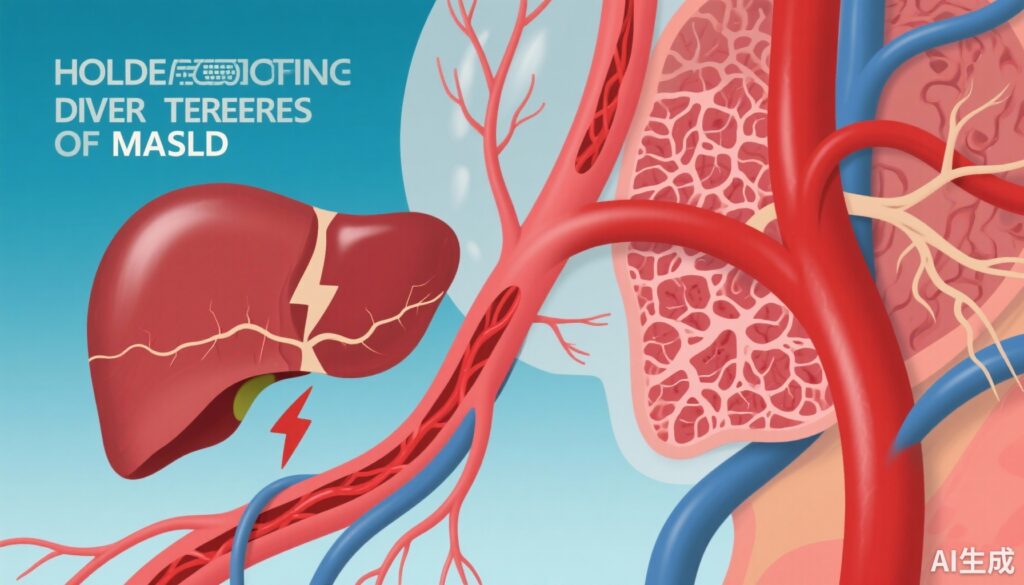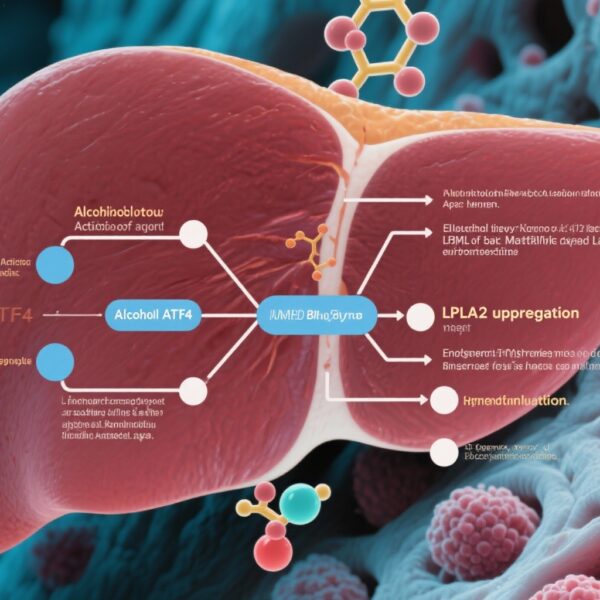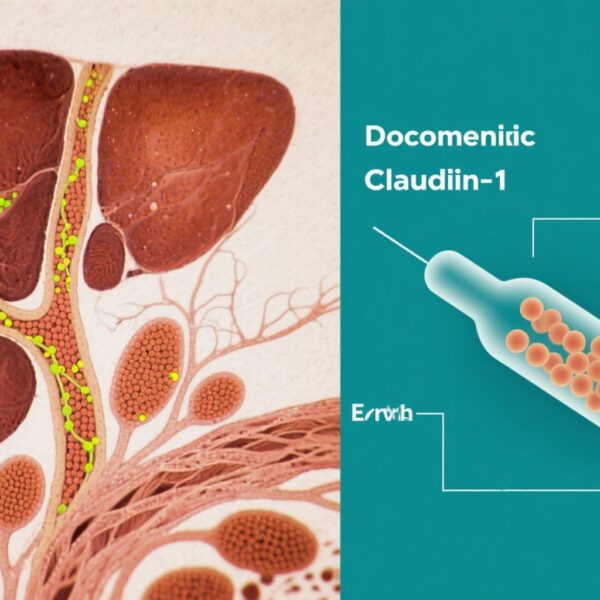Highlight
- Hypertension is highly prevalent in patients with metabolic dysfunction-associated steatotic liver disease (MASLD).
- Hypertension independently increases the risk of adverse clinical outcomes including mortality, cardiovascular, and liver-related events in MASLD.
- Hypertension is associated with accelerated progression of liver stiffness and histologic fibrosis in MASLD.
- These findings underscore the importance of multidisciplinary management and fibrosis screening in MASLD patients with hypertension.
Study Background
Metabolic dysfunction-associated steatotic liver disease (MASLD), previously termed non-alcoholic fatty liver disease (NAFLD), represents a spectrum of liver disorders linked to metabolic risk factors, mainly insulin resistance, obesity, and components of metabolic syndrome. MASLD is the most common chronic liver condition globally and a major cause of liver fibrosis, cirrhosis, and hepatocellular carcinoma (HCC). Cardiovascular disease remains the leading cause of death in these patients, often linked to shared risk factors such as hypertension, diabetes, and dyslipidemia.
Hypertension is a common comorbidity in MASLD populations. While its cardiovascular risks are well known, the direct impact of hypertension on hepatic outcomes, especially fibrosis progression and long-term clinical events, remains inadequately characterized. Given that liver fibrosis severity is the strongest predictor of liver-related and overall prognosis in MASLD, understanding how hypertension influences fibrosis and clinical trajectories is critical to guiding comprehensive care.
Study Design
This extensive investigation analyzed data from three large multicenter cohorts to assess the association of hypertension with adverse clinical outcomes and liver fibrosis progression in MASLD:
- UK Biobank (UKBB) cohort: 107,316 adults with MASLD were included to evaluate the risk of long-term adverse clinical outcomes defined as all-cause mortality, cardiovascular events, and liver-related events. Baseline hypertension was ascertained.
- VCTE-Prognosis cohort: Included 8,169 MASLD patients assessed using vibration-controlled transient elastography (VCTE) to monitor liver stiffness progression. Liver stiffness progression was defined as an increase from <10 kPa to ≥10 kPa or a ≥20% increase for baseline stiffness ≥10 kPa.
- Paired Liver Biopsy cohort: Included 1,670 MASLD patients with paired liver biopsies to confirm histologic fibrosis progression, defined as a one-stage increase in fibrosis stage over time.
Baseline hypertension status was the primary exposure variable. Standard Cox proportional hazards regression and Kaplan-Meier survival analyses, adjusted for relevant confounders, assessed the impact of hypertension on the predefined endpoints. Sensitivity and subgroup analyses validated the findings.
Key Findings
Prevalence of Hypertension: Hypertension was highly prevalent across cohorts: 37.1% in the UKBB cohort, 33.4% in the VCTE-Prognosis cohort, and 48.9% in the Paired Liver Biopsy cohort, reflecting the strong overlap between cardiovascular risk and MASLD.
Adverse Clinical Outcomes (UKBB Cohort): Hypertension was independently associated with a 30% increased risk of adverse clinical outcomes after adjustment for confounders (adjusted hazard ratio [HR] 1.30, 95% confidence interval [CI] 1.26-1.33, p < 0.001). These outcomes included all-cause mortality, cardiovascular events, and liver-related events, underscoring the critical impact of elevated blood pressure beyond cardiovascular systems.
Liver Stiffness Progression (VCTE-Prognosis Cohort): Patients with hypertension had a significantly higher risk of progression in liver stiffness measurements, indicating advancing fibrosis or increased portal pressure (adjusted HR 1.57, 95% CI 1.30-1.90, p < 0.001). This suggests hypertension may accelerate fibrotic remodeling in the liver.
Histologic Fibrosis Progression (Paired Liver Biopsy Cohort): Histopathological confirmation revealed that hypertension was associated with a 41% increased risk of worsening fibrosis stage (adjusted HR 1.41, 95% CI 1.12-1.78, p = 0.004). This finding provides robust, direct evidence linking hypertension with liver disease progression at the tissue level.
Subgroup and Sensitivity Analyses: These analyses reinforced the primary findings across age groups, sex, and baseline fibrosis stages, demonstrating the robustness and generalizability of the results.
Expert Commentary
This comprehensive study cogently highlights hypertension as a modifiable contributor to disease trajectories in MASLD. The findings integrate clinical and histological data from large and diverse populations and employ longitudinal assessment methods, strengthening causal inference.
Mechanistically, hypertension might exacerbate liver fibrosis progression via increased systemic and hepatic vascular resistance, endothelial dysfunction, and profibrotic signaling pathways. Moreover, shared metabolic and inflammatory pathways may synergistically amplify both cardiovascular and hepatic injury in MASLD patients with hypertension.
Although the study design is observational, the adjustment for confounders and consistent results across cohorts minimize bias. However, residual confounding by unmeasured factors cannot be excluded. The impact of antihypertensive therapies on hepatic outcomes was not specifically analyzed, representing an important area for future research.
Currently, MASLD guidelines emphasize cardiovascular risk management but less so on the direct hepatic implications of hypertension. These data support integrating routine blood pressure control and incorporating non-invasive fibrosis monitoring in hypertensive MASLD patients, enabling early intervention to mitigate both liver and cardiovascular complications.
Conclusion
This landmark study establishes hypertension as an independent risk factor for adverse clinical events and liver fibrosis progression in MASLD. Given the high prevalence of hypertension in this population, multidisciplinary care models combining hepatology and cardiology expertise are critical.
Routine screening using non-invasive fibrosis assessments such as transient elastography should be considered for MASLD patients with hypertension, facilitating risk stratification and personalized treatment. Future prospective interventional studies are warranted to evaluate whether optimized hypertension control can alter liver outcomes and improve survival in MASLD.
Ultimately, this evidence advocates for a paradigm shift recognizing hypertension not only as a cardiovascular risk but also as a key driver of liver disease progression in metabolic liver disorders.
Funding and References
This study was supported by multiple international collaborative groups and represents a major advancement in understanding MASLD pathophysiology. For full references, see:
Zhou XD, Lian LY, Chen QF, et al. Effect of hypertension on long-term adverse clinical outcomes and liver fibrosis progression in MASLD. J Hepatol. 2025 Aug 23. doi: 10.1016/j.jhep.2025.08.017. PMID: 40854336.



